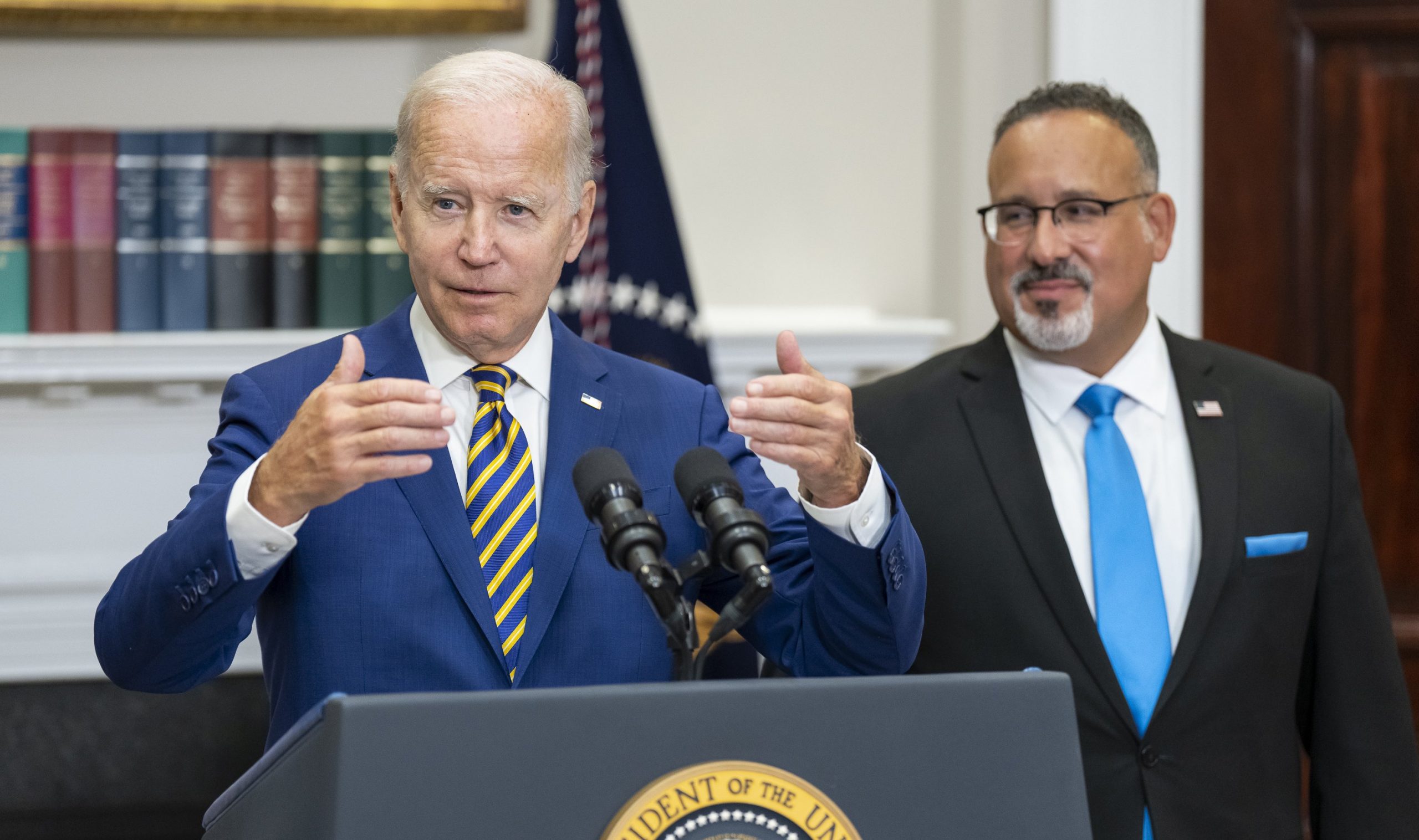How ending the COVID emergency will complicate the fight over student-loan forgiveness


The White House said last week that it will stop classifying COVID-19 as a national emergency on May 11. Allowing the emergency declarations to expire will unravel an array of federal policies on issues like free at-home tests, temporary Medicaid coverage, and even immigration.
But there is one policy tied to the pandemic that President Biden hopes will be unaffected: his plan to cancel up to $20,000 in debt for student-loan borrowers.
The plan is on hold as a result of lower-court rulings, and in a pair of cases being argued at the Supreme Court on Feb. 28, the administration hopes to convince the justices to reinstate it. But Biden’s decision to unwind the emergency declarations over the next three months (a response to Republican efforts to revoke the emergency measures immediately) will complicate his legal defense of student-debt relief — especially given the court’s skepticism of ambitious executive-branch policymaking in the absence of crystal-clear congressional authorization.
To justify the student-debt plan, the administration is relying on the HEROES Act, which was passed in the aftermath of the terrorist attacks of Sept. 11, 2001. The statute allows the Education Department to “waive or modify” provisions of student-loan programs to allay financial distress “in connection with” a “national emergency.”
So if COVID-19 is no longer a national emergency, does the executive branch still have the authority to waive student debt? The White House says yes. In a background statement circulated to reporters, the administration said the formal end of the national-emergency declaration “does not change the legal justification for the plan” because many borrowers will continue to face a risk of default based on lingering financial hardship stemming from the pandemic.
Still, ending the emergency will add ammunition to one of the chief arguments that opponents of the plan have been making all along: that the pandemic was merely a pretext for a $400 billion project that could not win congressional approval and lacks independent legal authority.
Even before Biden signaled his intent to formally end the COVID-19 declarations, litigants challenging the student-loan plan in the lower courts relied on a stray remark he made in September. “The pandemic is over,” Biden said at the time. Opponents used that sentence to try to undermine the administration’s legal rationale. And in papers filed at the Supreme Court, Republican-led states opposing the plan argued last month that the plan “rests on a tenuous and pretextual connection to a national emergency.”
Now, with the national emergency set to formally dissolve, it will be elementary for the challengers to tell the Supreme Court at the Feb. 28 oral arguments that the connection is not just tenuous but is totally severed.
Two justices — one conservative and one liberal — have already signaled in another context that they are suspicious of relying on the pandemic as a limitless justification for sweeping federal policies. In December, the court pondered whether to hear a case about the so-called Title 42 border policy, a public-health measure adopted by President Trump that allows immigration authorities to quickly expel people seeking asylum at the border. The Biden administration has tried to end the policy, saying it’s no longer necessary to prevent the spread of COVID-19, but some red states are trying to force the administration to keep it in place.
When the court agreed to hear a portion of the case, Justice Neil Gorsuch dissented, arguing that the court need not intervene at this point because the “emergency decrees” that justified the policy “have outlived their shelf life.” Joining Gorsuch’s dissent from the other ideological end of the bench was Justice Ketanji Brown Jackson. As Katie Barlow noted at the time, it’s possible to read the dissent as a forecast for how Gorsuch (and perhaps Jackson, too) will approach the student-loan challenges.
“The current border crisis is not a COVID crisis,” Gorsuch wrote in the Title 42 case. “And courts should not be in the business of perpetuating administrative edicts designed for one emergency only because elected officials have failed to address a different emergency.”
The nation’s student-debt crisis is also an emergency. But it’s an emergency that predated the pandemic, and it will persist when the COVID emergency ends. During oral arguments later this month, look for the justices to probe how much that matters.
This column was originally published on Feb. 2 in National Journal and is owned by and licensed from National Journal Group LLC.
Posted in Merits Cases
Cases: Biden v. Nebraska, Department of Education v. Brown
